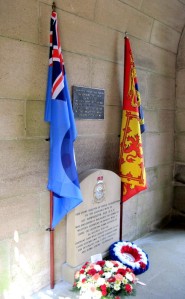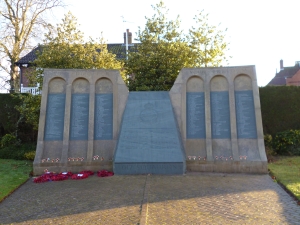By Michael Gordon, Project Assistant
The 16th and 17th of May this year mark the 70th Anniversary of Operation Chastise, better known as the “Dambusters” raids. These raids saw 19 modified Avro Lancaster bombers of 617 Squadron embark on a daring mission to destroy the dams within the Ruhr valley, in an attempt to cripple German industry.
617 Squadron was formed for the specific purposes of this mission and was equipped with a bespoke weapon, the now famous Bouncing Bomb codenamed ‘Upkeep’, designed by Barnes Wallis. This highly specialised mission required training and preparation unlike anything the crews had previously experienced. To prepare, the crews were sent to practise their technique at suitable locations within the UK.
Although the crews did not know the specifics of their mission during the training phases, it was quite obvious that they had been selected for a unique task due to the very specific topography of the practice locations. The crews were sent to four different locations to practise low level flying over water and precision targeting. We have recorded three memorials to these events which are located on the practice sites.
Eyebrook Reservoir in Stoke Dry, Rutland was mocked up with canvas towers to resemble the profile of the German targets. It was also used beyond the raids for further training with the ‘Upkeep’ bomb. A plaque at the site commemorates the reservoir’s importance in preparing the crews for the raids on the Mohne and Eder dams in Germany.
At Derwent Dam (14270) in Derbyshire, chosen because of its close resemblance to the Ruhr dams, there is a stone tablet inside the gatehouse recording the use of the dam by 617 Squadron. In 1988, a further tablet was added, commemorating those who died during the raid. In 2008, a 65th Anniversary event was held at the Derwent Dam, involving a flypast by a Lancaster from the Battle of Britain Memorial Flight, which made low level passes over the dam at 100ft.
The exploits of 617 Squadron during Operation Chastise inspired their famous title of the Dambusters, and earned them a reputation as a precision bombing squadron for future operations.
The names of the 204 men of the Squadron who died in raids during the Second World War are inscribed upon the memorial wall to the Squadron at Royal Gardens, Woodhall Spa, Lincolnshire. The wall has been purposely shaped to resemble a dam.






 All essential supplies required by the city’s 2.5 million inhabitants had to be brought in by air.
All essential supplies required by the city’s 2.5 million inhabitants had to be brought in by air. 
 Some enemies died in the skies over Britain. In the First World War, SL11 a German Army airship, was shot down over Cuffley in Hertfordshire in 1916 by
Some enemies died in the skies over Britain. In the First World War, SL11 a German Army airship, was shot down over Cuffley in Hertfordshire in 1916 by  Members of the Air Transport Auxiliary – pilots who ferried planes in the Second World War – are to receive a new award recognising their contribution to the war effort.
Members of the Air Transport Auxiliary – pilots who ferried planes in the Second World War – are to receive a new award recognising their contribution to the war effort.